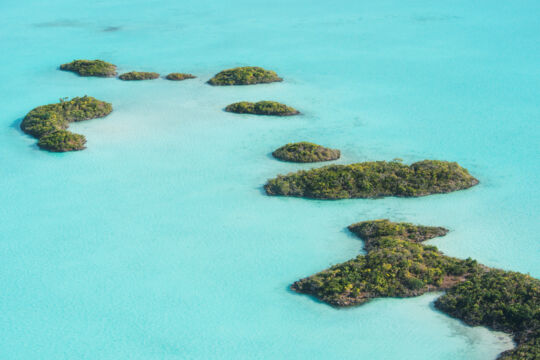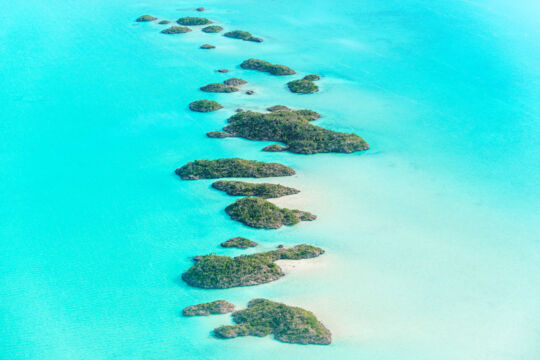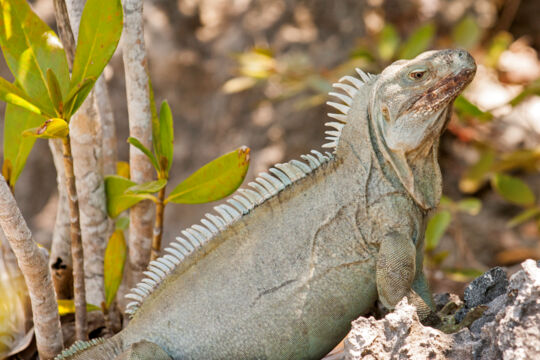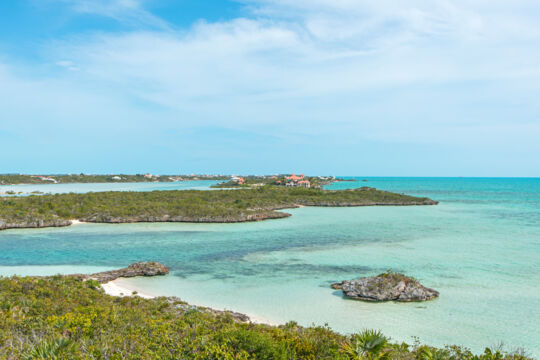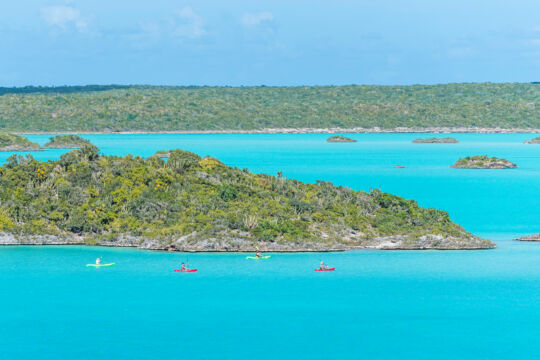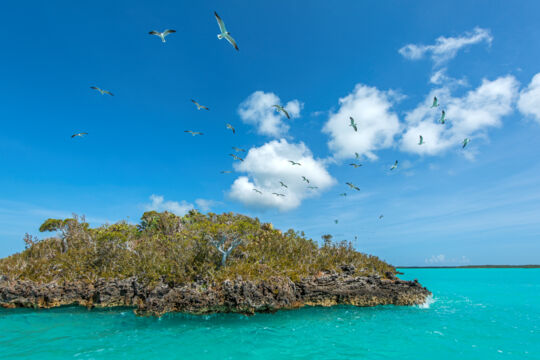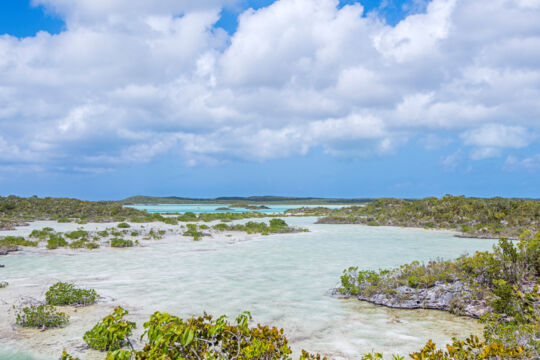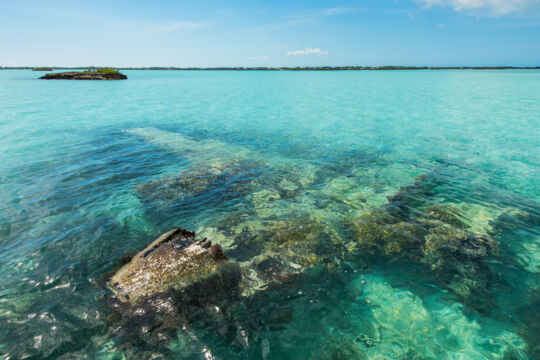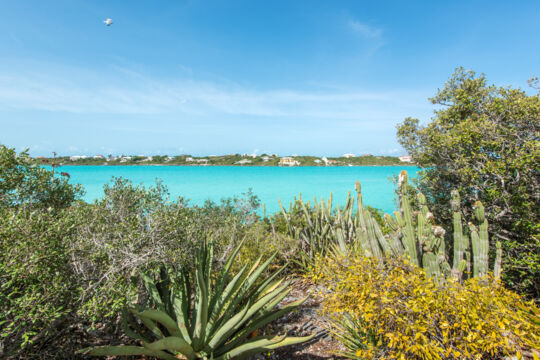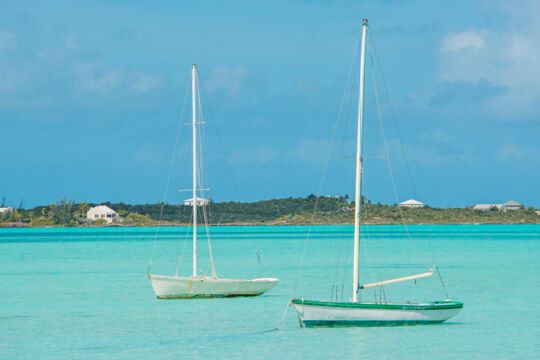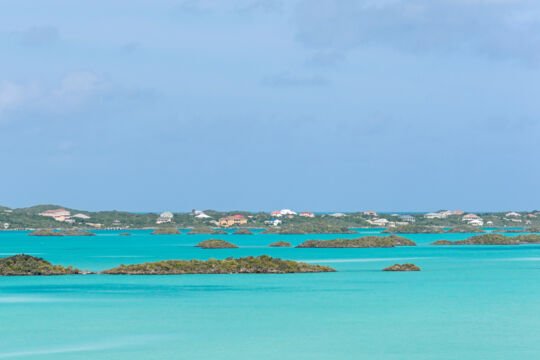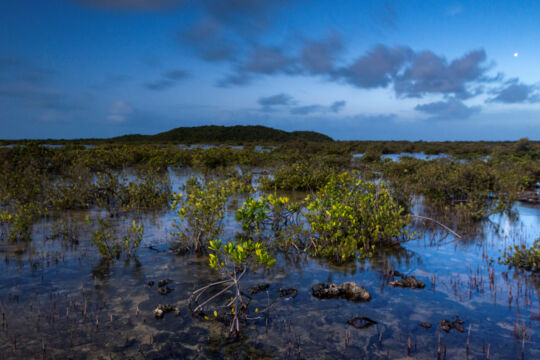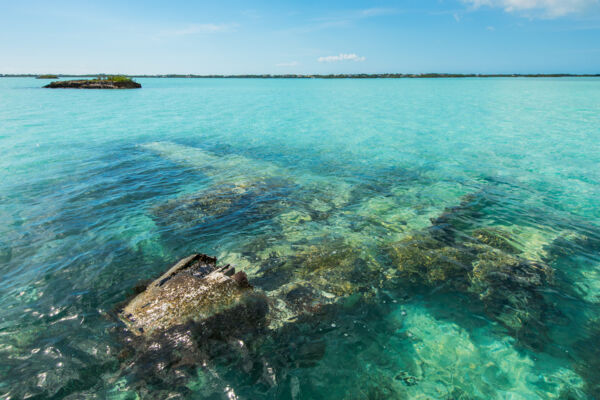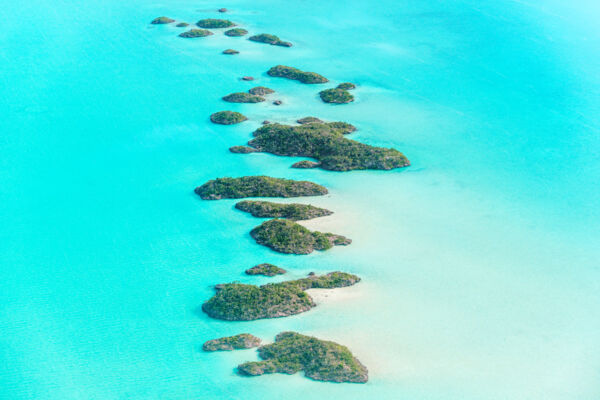Chalk Sound National Park Providenciales

Chalk Sound National Park is a highly scenic natural lagoon in southwestern Providenciales. This national park features shallow and brilliant turquoise water with hundreds of small rocky islands.
Chalk Sound is nearly landlocked, yet a winding channel does connect it to the ocean and the Caicos Banks off the south coast of Providenciales.
The main attraction for most visitors is sightseeing by road on the southern side, or kayaking and paddleboarding its clear waters.
The water in Chalk Sound is clean and algae-free. The incredible turquoise hues are created by the refraction of sunlight off the fine limestone sand and particles of the area.
Chalk Sound is also used as the name for the residential area of Chalk Sound.
Sights in Chalk Sound
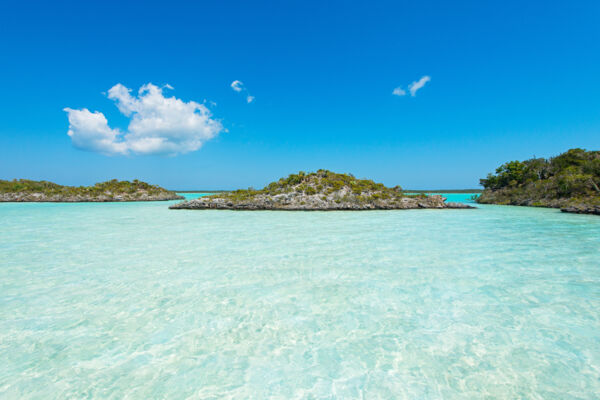
Nearly all of the islands in Chalk Sound with a decent amount of vegetation have Turks and Caicos rock iguanas. These large lizards eke out an existence by foraging for fruits, plants, prickly pear cacti, and the occasional insect. Unlike the iguanas found on the other islands in the country that dig burrows in the sand, the iguanas on the Chalk Sound islands make their homes by cleaning out the existing holes and crevices in the rock.
Bonefish and barracuda are common in the water, and stingrays and small lemon sharks can occasionally be sighted. Bird life isn’t as abundant here as it is at some of the other wetland areas in the country, but the far western side of the lagoon at times can have large numbers of gulls and terns, as well as some herons.
The coasts of Chalk Sound feature what is referred to locally as ironshore, a form of weathered and intricate marine limestone with a jagged and varied surface. This exposed rock also exhibits countless numbers of miniature Karst-process features, such as small sinkholes and caves.
Unfortunately, no provisions have been made for designated scenic overlooks, public parking, or launching areas for kayaks in Chalk Sound, so it can be difficult to really appreciate the area. Over the years, uncoordinated development and clear-cut bulldozing of lots have also greatly diminished the natural beauty of Chalk Sound.
Safety
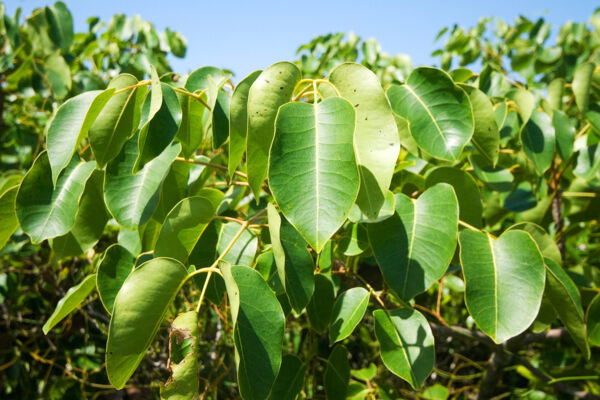
Coral sumac, also known as poisonwood, is a toxic tree that’s very common in the coastal vegetation found around Chalk Sound. Touching this plant can cause severe rashes, and contact with the sap of this tree can result in serious blisters and skin issues.
In serious cases, you may require medical attention to treat a coral sumac reaction.
Chalk Sound Beaches
Although not inside the national park, the scenic and sheltered Sapodilla Bay and Taylor Bay are found in the greater Chalk Sound area, and are the only significant beaches nearby.
The ocean at these two coasts is shallow, calm, and a little warmer than what’s found at other beaches, with Taylor Bay being an excellent beach for children.
To get to Sapodilla Bay, take the first left after turning onto Chalk Sound Drive from South Dock Road. This road is unpaved and found about 100 feet (30 m) down Chalk Sound Drive. Taylor Bay Beach is accessed off of Ocean Point Drive.
Kayaking and Paddleboarding
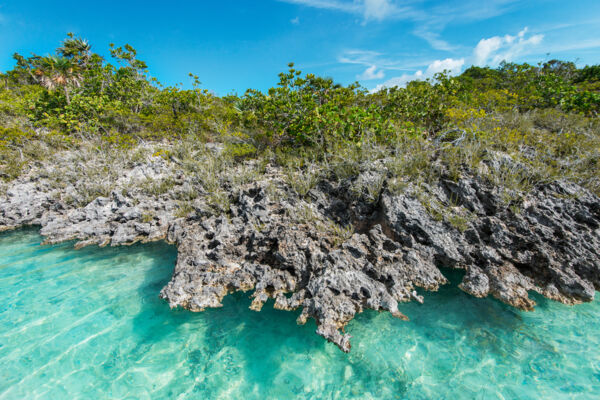
On calm days, Chalk Sound is one of the finest areas in the Turks and Caicos for paddle water sports. Yet on many days, the region may be exposed to the regular trade winds blowing from the east.
Such winds can cause choppy surface conditions at times, and may make for a tiring return journey if you initially head downwind. It’s often most pleasant to begin your journey into the wind so that you don’t have to fight your way back.
If you are taking a kayak or stand-up paddleboard to Chalk Sound by car, one of the best launch spots can be found by following Chalk Sound Drive for about 3 miles (5 km), turning right onto Oleander Circle, and continuing until you reach the water.
Although the coast here is rocky, this location is near the largest group of small islands in Chalk Sound, along with a blue hole underwater cave system.
When launching and moving between the small islands, beware of the razor-sharp limestone ironshore formations at the water’s edge, as they can easily cause lacerations and damage your watercraft.
Kayak and Paddleboard Rentals
If you are visiting the Turks and Caicos Islands and would like to kayak in Chalk Sound, there are a few options available. Las Brisas Restaurant (part of Neptune Villas) is the only business located in Chalk Sound offering kayak rentals, with rates by the hour. Reservations are recommended.
Most of the vacation villas on the water in Chalk Sound offer complimentary kayak use for guests. If you prefer to have a guided tour, arrangements can be made through local eco-tour business Big Blue Collective.
